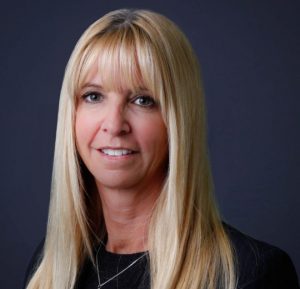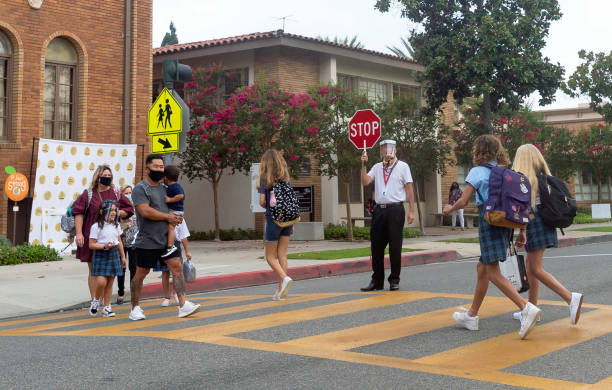A COVID Slide Quick Sheet Interview with Christina Theokas, Ph.D. and Vice President of Applied Science at Turnaround for Children

As teachers and administrators begin to work with students in a physical classroom or virtual setting, support will need to go beyond simply teaching a curriculum. Turnaround for Children, a nonprofit organization working in NYC, Washington, D.C., and Northern California schools, translates the science of learning and development into tools, strategies and services for educators so they can help more students reach their full potential as learners.
Christina Theokas, Ph.D. and Vice President of Applied Science at Turnaround for Children, virtually sat down with the Collaborative for Student Success to explore some questions on why social-emotional efforts are so critical in making sure all students are supported in overcoming challenges presented by the COVID-19 pandemic. This interview was featured in the COVID Slide Quick Sheet, a bi-weekly newsletter by the Collaborative for Student Success that collects and shares developing news stories about the impact of the pandemic on education, reopening schools, and addressing learning loss. Subscribe to the COVID Slide Quick Sheet here.
How do we ensure support for ALL students during the pandemic?

The context of adversity and the resulting stress and trauma children may experience can have a deep impact on healthy development and academic achievement. All adults need to have this knowledge. Research shows that unbuffered stress can interfere with a student’s ability to engage productively in school. Today, amid COVID-19, racial injustice and economic uncertainty, children are facing greater stress, loss, insecurity and trauma than many have experienced before, and it’s everywhere. The pandemic is causing disruption to our social and support systems. It has made visible and dramatically escalated the inequities that have existed for BIPOC children. School communities have historically been a front line of defense, but are vulnerable right now.
As reopening begins, we need to focus on creating an environment, whether virtual or in person, that is rich in relationships and filled with safety and belonging. On this foundation, we should ensure that schools are equipped to implement an integrated tiered support system that can meet each child where they are without stigma or blame (Turnaround has new tiered supports tools in development right now). This is how we can proactively begin to address the unprecedented need that will show up this year. Teachers need support in creating these environments and to have structures and processes in place to collaborate with colleagues and address needs as they arise. We need to re-envision how we meet each student’s core needs in a way the system has never done before. Educators need to know this is a priority and be given time and support to do it well. As a team, educators and families can create learning environments that are rich in protective factors, where all students feel ready for learning because there is a culture of community and shared responsibility that is felt across the school.
What should schools, and teachers be doing this fall to support their student’s social and emotional learning?
The most important thing that educators can do right now, at this time of cautious reopening, is prioritize a new set of Three Rs: Relationships, Routines and Resilience. It will be hard to build critical skills and mindsets and have students engage in the kind of work that we want unless we attend to the non-negotiable conditions that support healthy whole child development. These New Three Rs are distilled from Turnaround’s Vision for School and Student Success and highlight what to focus on during the reopening period. This will help build a foundation for student’s cognitive, academic, social and emotional learning.
Relationships are central to how students learn about themselves, new things and find their passion and purpose. Genuine relationships are reciprocal, culturally responsive and trustful, and are based on shared expectations and goals. When educators listen to and respond to each student by scaffolding, and then lessening support, while providing increasing levels of challenge and autonomy, students thrive. Our brains like order and knowing what is coming next, so they love routines. Clearly communicating a daily schedule and providing resources for students to track their day and work are two concrete strategies to build consistency. And building resilience starts with understanding the strengths students already have from life experiences and bolstering the skills and mindsets they possess to regulate emotions, actions, and behavior.
Have you seen any practices currently in schools or districts that are working to support students who are stressed?
Educators have been eager to connect with their students and are being creative to ensure they reach each student. Practices like daily virtual advisories that enable teachers to check in on how students are doing have been essential. As well, brief hello’s via email and periodic phone calls pay big dividends in attendance and engagement. Teachers are also taking advantage of seeing students at home and learning more about their families and traditions that are strengthening bonds.
One structure that Turnaround recommends to provide a consistent and predictable structure for maintaining relationships is something called “Banking Time,” which involves scheduling regular times for 1:1 touchpoints with students, virtually or in-person, to provide informal connection and social support. This is how it works: Adults set up time to meet with students for 10-15 minutes, 1-3 times a week. The time should be designated as “sacred” and never taken away even if students are not meeting expectations. Adults should seek to follow their student’s lead and not direct the conversation or teach. Banking Time helps strengthen reciprocal interactions and bonds with your students. Turnaround has created a simple Banking Time worksheet. The most salient point is to set aside the time now to rebuild relationships, build new ones and understand what children have been doing (and, yes, learning) since the outbreak began.

Why is investing in social-emotional learning so important during this time?
Historically, there has been a false choice in education between the things we need to do on social and emotional development, physical and mental health and the pursuit of rigorous academic achievement. The science shows us that learning is integrated, no part of the brain develops in isolation. Emotions drive children’s cognitive and learning skills. They determine whether children are ready to engage or shut down. It is all one developmental story. Social, emotional and academic learning are accomplished through real experiences, authentic practice and formative feedback. This means academic instruction and supports for learning, including self-regulation or goal setting, are the same thing. Actively building these skills will help students manage stress right now and cope better with future adversity.
How can education officials prioritize data collection and the use of data in decision-making as schools reopen/throughout the pandemic? Do you have any suggestions on ways for education and school leaders to communicate the importance of data to their communities?
Assessment matters, but we need to change both the data we collect and the way we use it as schools adapt to this new context. We need to understand student performance, how students feel and also the experiences that may impede learning to create the right environment and supports. Traditional student assessments are often used to label students and their potential, when research actually tells us that students show different levels of performance under different levels of support. It is critically important for educators to understand both the student and the context in which they are situated – especially in times of widespread uncertainty and stress.
More than ever, education officials need to have a clear purpose for assessment. There will be a tendency to want to test students right away, but the purpose needs to match the test and it has to be clear how the data will help both teachers and students. It’s with this goal in mind that we created our Wellbeing Index—a strengths-based “snapshot” of an individual student’s wellbeing at a given point in time. This student self-assessment is short, positively-worded and designed to be used as often and flexibly as a classroom teacher deems necessary. This assessment will help educators identify the strengths and needs of individual students and guide specific scaffolding and supports towards holistic growth—all of which is what education officials must be focusing on when we return to school. Data is an essential part of the system, but to support decision making, we need to be clear about our goals and how the data will help us reach them.
About the Collaborative for Student Success
At our core, we believe leaders at all levels have a role to play in ensuring success for K-12 students. From ensuring schools and teachers are equipped with the best materials to spotlighting the innovative and bold ways federal recovery dollars are being used to drive needed changes, the Collaborative for Student Success aims to inform and amplify policies making a difference for students and families.
To recover from the most disruptive event in the history of American public schools, states and districts are leveraging unprecedented resources to make sure classrooms are safe for learning, providing students and teachers with the high-quality instructional materials they deserve, and are rethinking how best to measure learning so supports are targeted where they’re needed most.


